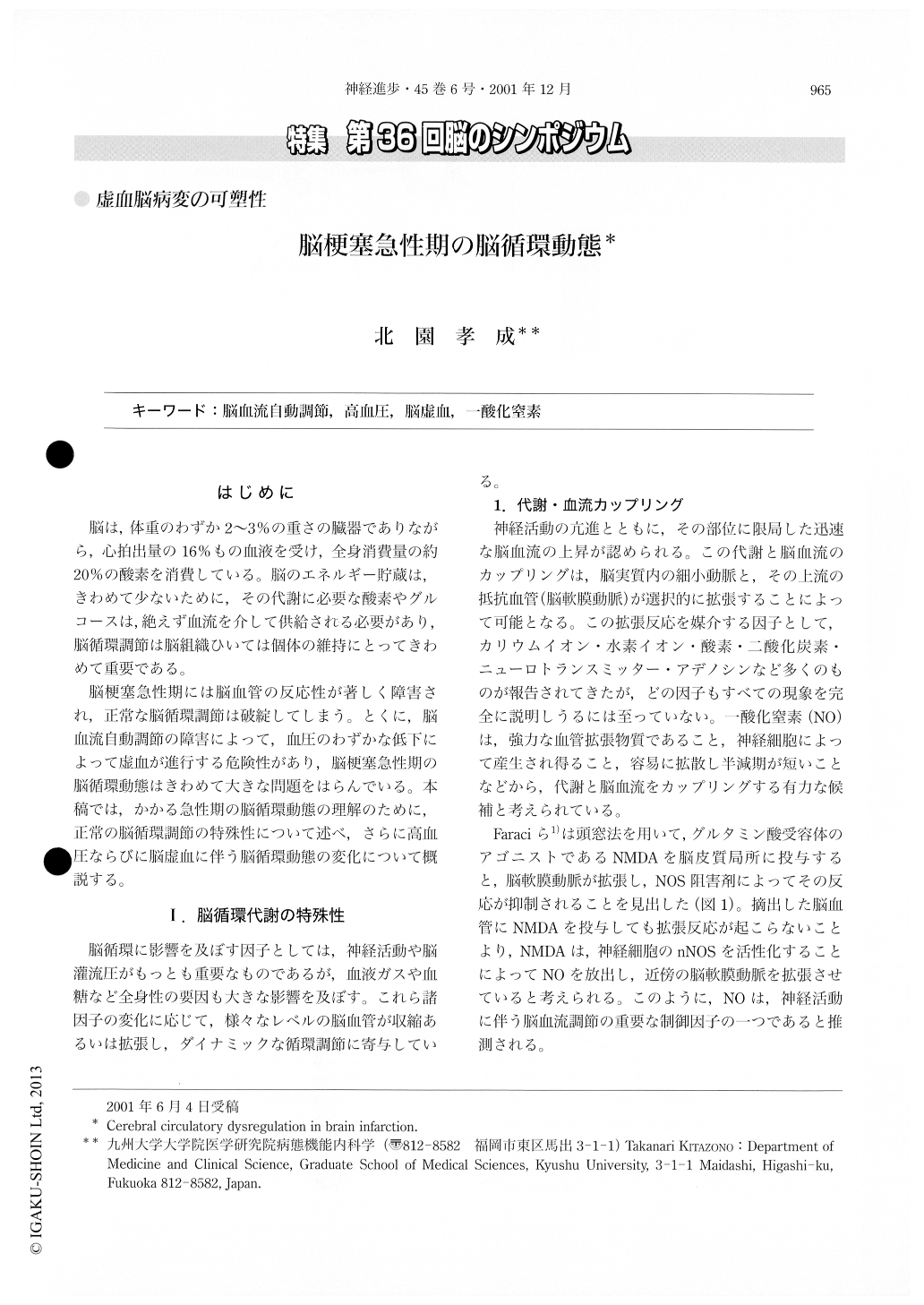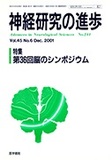Japanese
English
- 有料閲覧
- Abstract 文献概要
- 1ページ目 Look Inside
はじめに
脳は,体重のわずか2~3%の重さの臓器でありながら,心拍出量の16%もの血液を受け,全身消費量の約20%の酸素を消費している。脳のエネルギー貯蔵は,きわめて少ないために,その代謝に必要な酸素やグルコースは,絶えず血流を介して供給される必要があり,脳循環調節は脳組織ひいては個体の維持にとってきわめて重要である。
脳梗塞急性期には脳血管の反応性が著しく障害され,正常な脳循環調節は破綻してしまう。とくに,脳血流自動調節の障害によって,血圧のわずかな低下によって虚血が進行する危険性があり,脳梗塞急性期の脳循環動態はきわめて大きな問題をはらんでいる。本稿では,かかる急性期の脳循環動態の理解のために,正常の脳循環調節の特殊性について述べ,さらに高血圧ならびに脳虚血に伴う脳循環動態の変化について概説する。
Cerebral circulation is regulated by complex mechanisms that allow the brain to regulate its own blood supply. The major factors that regulate cerebral blood flow are classified into neural activity, arterial pressure (autoregu-lation), and neurogenic factors. Dilator responses of the cerebral arteries, that are mediated by nitiric oxide and potassium channels, play an important role in such regulatory mechanisms of cerebral circulation. Cerebral ische-mia alters the reactivity of the cerebral arteries, i. e. vasomotor paralysis, and thereby produces marked deteriora-tion of cerebral blood flow regulation.

Copyright © 2001, Igaku-Shoin Ltd. All rights reserved.


